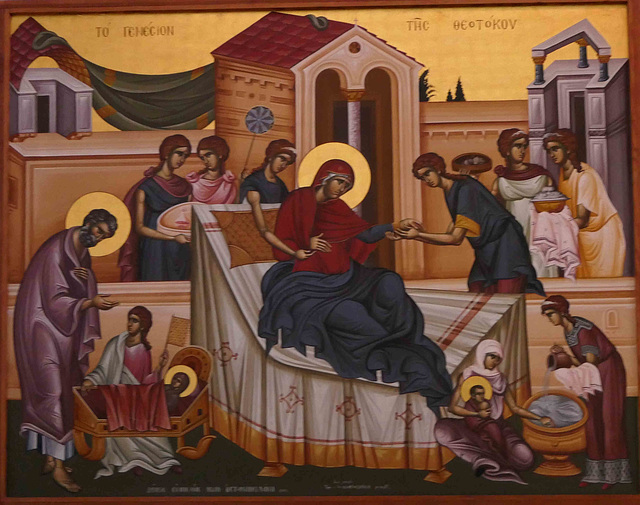Heraklion - Agios Titos
Heraklion - Venetian Loggia
Heraklion - Venetian Loggia
Heraklion - Venetian Loggia
Heraklion - Koules Fortress
Heraklion - Neoria Vechi
Heraklion - Historical Museum of Crete
Heraklion - Historical Museum of Crete
Heraklion - Historical Museum of Crete
Heraklion - Historical Museum of Crete
Heraklion - Historical Museum of Crete
Heraklion - Historical Museum of Crete
Heraklion - Historical Museum of Crete
Heraklion - Historical Museum of Crete
Heraklion - St Peter
Heraklion - Koules Fortress
Heraklion - Archaeological Museum
Heraklion - Archaeological Museum
Heraklion - Archaeological Museum
Heraklion - Archaeological Museum
Heraklion - Archaeological Museum
Heraklion - Archaeological Museum
Heraklion - Archaeological Museum
Heraklion - Agios Titos
Heraklion - Agios Titos
Heraklion
Heraklion - Evangelismos
Heraklion - Agia Ekaterini
Heraklion - Agia Ekaterini
Heraklion - Agia Ekaterini
Heraklion - Agia Ekaterini
Heraklion - Agia Ekaterini
Heraklion - Agia Ekaterini
Heraklion - Agia Ekaterini
Heraklion - Agia Ekaterini
Heraklion - Agios Minas Cathedral
Heraklion - Agios Minas Cathedral
Heraklion - Agios Minas Cathedral
Heraklion - Agios Minas Cathedral
Hannover - Aegidienkirche
Hannover - Aegidienkirche
Hannover - Rathsapotheke
Hannover - Markthalle
Hannover - Marktkirche
Hannover - Marktkirche
Location
Lat, Lng:
You can copy the above to your favourite mapping app.
Address: unknown
You can copy the above to your favourite mapping app.
Address: unknown
Keywords
Authorizations, license
-
Visible by: Everyone -
All rights reserved
-
8 visits
Heraklion - Agios Titos


Crete is the largest and most populous of the Greek islands, is located about 100 km south of the Peloponnese. Crete was the center of Europe's first advanced civilization, the Minoans, from 3000 to 1400 BC. The Minoan civilization was overrun by the Mycenaean civilization from mainland Greece. Crete was later ruled by Rome, then successively by the Byzantine Empire, Andalusian Arabs, the Byzantine Empire again, the Venetian Republic, and the Ottoman Empire. In 1898 Crete, whose people had for some time wanted to join the Greek state, achieved independence from the Ottomans, formally becoming the Cretan State. Crete became part of Greece in December 1913.
Heraklion is the largest city and the administrative capital of the island of Crete. With a municipal population of about 180.000 it is the fourth largest city in Greece. The greater area of Heraklion has been continuously inhabited since at least 7000 BCE, making it one of the oldest inhabited regions in Europe. As a major center of the Minoan civilization it often considered Europe's oldest city.
In 55 AD, the apostle Paul and his companion Titos may have stayed in Gortyn, the capital of Crete where Titos became the first bishop of Crete.
After the division of the Roman Empire in 395 AD, Crete came under Byzantine rule. The successful Christianisation made it necessary to build a new church around 600. Around 826, the Saracens conquered Crete, destroyed Gortyn and founded Crete's new capital Iraklio. In 960, Nikephoros Phokas reconquered Crete for the Byzantine Empire and expelled the Arabs from Crete and a new metropolitan church, dedicated to the apostle Titus, was built. After the Fourth Crusade of 1204, Crete fell to the Venetians and the church became the Roman Catholic cathedral. In 1544 the church burned down completely, only the skull relic of St Tito could be saved. In 1669, the Turks conquered Crete and the church was converted into a mosque. The Venetians took the skull relic of St Tito to Venice. The building was destroyed by an earthquake in 1856 and was rebuilt in Ottoman style until 1872 and the holy skull was returned.
A (modern) icon depicting the Nativity and on the right the "First Bath".
Heraklion is the largest city and the administrative capital of the island of Crete. With a municipal population of about 180.000 it is the fourth largest city in Greece. The greater area of Heraklion has been continuously inhabited since at least 7000 BCE, making it one of the oldest inhabited regions in Europe. As a major center of the Minoan civilization it often considered Europe's oldest city.
In 55 AD, the apostle Paul and his companion Titos may have stayed in Gortyn, the capital of Crete where Titos became the first bishop of Crete.
After the division of the Roman Empire in 395 AD, Crete came under Byzantine rule. The successful Christianisation made it necessary to build a new church around 600. Around 826, the Saracens conquered Crete, destroyed Gortyn and founded Crete's new capital Iraklio. In 960, Nikephoros Phokas reconquered Crete for the Byzantine Empire and expelled the Arabs from Crete and a new metropolitan church, dedicated to the apostle Titus, was built. After the Fourth Crusade of 1204, Crete fell to the Venetians and the church became the Roman Catholic cathedral. In 1544 the church burned down completely, only the skull relic of St Tito could be saved. In 1669, the Turks conquered Crete and the church was converted into a mosque. The Venetians took the skull relic of St Tito to Venice. The building was destroyed by an earthquake in 1856 and was rebuilt in Ottoman style until 1872 and the holy skull was returned.
A (modern) icon depicting the Nativity and on the right the "First Bath".
Alexander Prolygin has particularly liked this photo
- Keyboard shortcuts:
Jump to top
RSS feed- Latest comments - Subscribe to the comment feeds of this photo
- ipernity © 2007-2025
- Help & Contact
|
Club news
|
About ipernity
|
History |
ipernity Club & Prices |
Guide of good conduct
Donate | Group guidelines | Privacy policy | Terms of use | Statutes | In memoria -
Facebook
Twitter

Sign-in to write a comment.